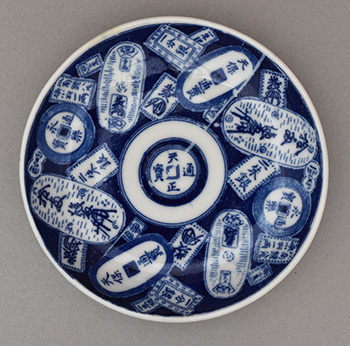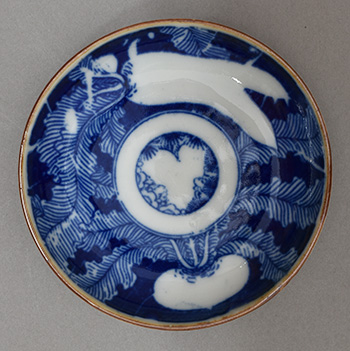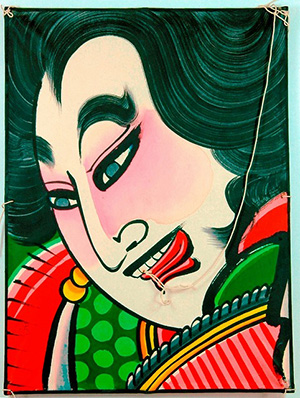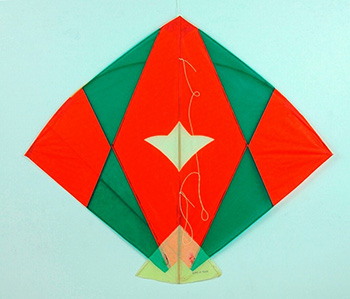
Inbande plates
Plate with a design of coins
held in Mr. and Mrs. Yuasa’s collection; 13.0 cm in diameter

Plate with a design of a forked daikon and a turnip
held in Mr. and Mrs. Yuasa’s inbande collection; 11.0 cm in diameter

The combination of a forked daikon and a turnip is considered to be lucky. A forked daikon is known as an auspicious item and traditionally used as an offering to Daikokuten, a god of wealth. Furthermore, “turnip” means kabu in Japanese, and one of its homonyms means “stock; share.” Also turnips are symbols of prosperity, harmony and good health due to their high growth speed and round shape.
Asian kites
Tsugaru kite
Hirosaki City, Aomori Prefecture; created by Narita Tamotsu;
held in Kimura Kaoru’s collection: 68.0 cm long × 48.0 cm wide

While Japanese kite frames are usually made of bamboo sticks, Tsugaru kites use thin sticks of hiba (a variety of Japanese cypress that grows in the Tsugaru region) for their frames. Most Tsugaru kites have pictures of samurai warriors painted on them, like the ones depicted on the traditional Neputa floats in this region. These pictures are characterized by powerful strokes and a vivid red color. This picture depicts Tomoe Gozen, a renowned female warrior of the Heian period appearing in the Tale of the Heike and other Japanese literature.
Patang from India
held in Kimura Kaoru’s collection; 51.0 cm long × 59.0 cm wide

A “patang” is one of India’s representative kites. Kite fighting is a popular pastime in India and competitions are held in many parts of the country. A patang is a fighter kite used to bring down an opponent’s kite by cutting its string. Kite flying started and developed for recreation enjoyed by aristocrats in India, and it is said that Asian kites originated from Indian kites.

Uniquely, this small plate has a design of gold, silver and copper coins, which represent wealth and happiness and thus are considered a sign of good luck.